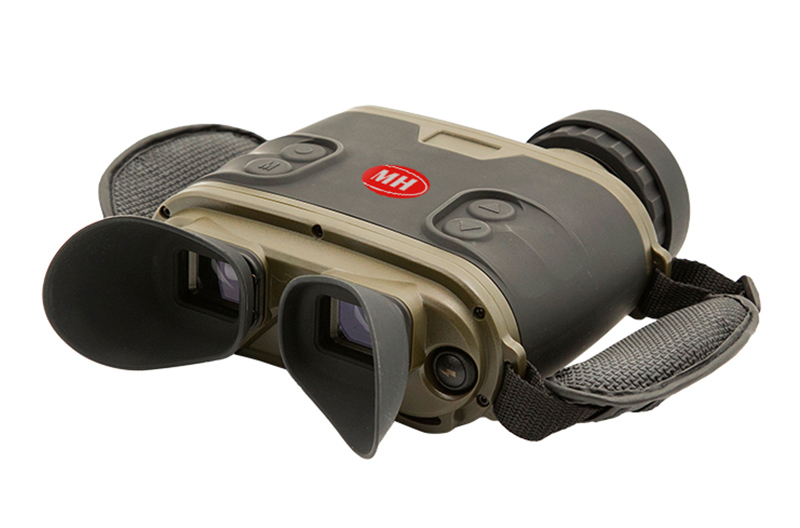January 08, 2025By: MH TECHView: 91

1. Infrared detector technology
Detector material research and development: High-performance infrared detector materials are the key to thermal imaging night vision devices. Currently, commonly used materials include mercury cadmium telluride (HgCdTe), quantum well infrared detectors (QWIP), and type II superlattice detectors. Mercury cadmium telluride materials have the advantages of high sensitivity and adjustable detection wavelength range, and can detect in different infrared bands; quantum well infrared detectors have high uniformity and stability, and can be mass-produced and integrated; type II superlattice detectors have potential in infrared detection performance and scalability, and the detection performance can be optimized by adjusting the structure and composition of the material.
Detector array manufacturing: The manufacturing process of the detector array directly affects the resolution and performance of thermal imaging night vision devices. Advanced manufacturing processes such as molecular beam epitaxy (MBE) and metal organic chemical vapor deposition (MOCVD) can precisely control the growth and structure of detector materials and realize high-resolution and high-sensitivity detector arrays. For example, these processes can produce detector arrays with resolutions of 640×480, 1280×720 or even higher, improving the ability of thermal imaging night vision devices to resolve target details.
2. Optical scanning and optical system technology
Optical scanning technology: In some thermal imaging night vision devices, the optical scanning mechanism is used to decompose the thermal radiation map of the scene into thermal radiation signals and focus them on the infrared detector. There are many optical scanning methods, such as serial scanning, parallel scanning and staring scanning. Staring scanning has higher sensitivity and frame rate, can quickly acquire thermal images, and is suitable for application scenarios with high real-time requirements; while serial scanning and parallel scanning have advantages in certain specific applications, such as optimizing the scanning method to improve detection efficiency in large field of view and long-distance detection.
Optical system design and manufacturing: High-quality optical systems are crucial to the imaging quality of thermal imaging night vision devices. The optical system needs to have characteristics such as high transmittance, low aberration and good thermal stability. Advanced optical design software and manufacturing processes can design and manufacture optical components such as lenses, reflectors and filters that meet these requirements. For example, the use of aspheric lenses and diffractive optical elements can correct aberrations and improve imaging quality; the use of special coating technology can increase the transmittance of optical components in the infrared band and reduce energy loss.
3. Signal processing and image processing technology
Signal processing algorithm: The detector of thermal imaging night vision device outputs a weak electrical signal, which needs to be amplified, filtered, and noise-reduced by the signal processing algorithm to improve the quality and stability of the signal. Advanced signal processing algorithms can effectively remove noise, enhance target signals, and improve the detection sensitivity and resolution of thermal imaging night vision devices. For example, the adaptive filtering algorithm can automatically adjust the parameters of the filter according to different environmental conditions to remove background noise and interference signals; the correlated double sampling algorithm can reduce the fixed pattern noise of the detector and improve the uniformity of the image.
Image processing technology: Powerful image processing technology is required to convert the processed signal into a visual thermal image. Including grayscale transformation, pseudo color coding, image enhancement, target recognition and tracking and other technologies. Grayscale transformation can adjust the contrast and brightness of the image to make the thermal image clearer; pseudo color coding can represent areas of different temperatures with different colors to enhance the visual effect of the image; image enhancement technologies such as sharpening and smoothing can further improve the quality of the image; target recognition and tracking technology can automatically identify the target of interest, track and analyze it, and reduce the burden on operators.
4. Low temperature refrigeration and packaging technology
Low temperature refrigeration technology: For some highly sensitive thermal imaging night vision devices, the detector needs to be cooled to a low temperature state to reduce the noise of the detector and improve the detection performance. Commonly used refrigeration technologies include Stirling refrigerator, micro-throttling refrigerator and thermoelectric refrigeration. Stirling refrigerator has the advantages of large cooling capacity and high efficiency, and is suitable for occasions requiring rapid cooling and high cooling power; micro-throttling refrigerator has the characteristics of small size and light weight, and can be used in portable thermal imaging night vision devices; although the refrigeration efficiency of thermoelectric refrigeration is relatively low, it has the advantages of simple structure and high reliability, and is suitable for some application scenarios with low refrigeration requirements.
Packaging technology: Detectors and related electronic components need to be packaged to protect them from the external environment while ensuring good heat dissipation and electrical connections. Packaging technologies include vacuum packaging, hermetic packaging, and metal packaging. Vacuum packaging can reduce the heat exchange between the detector and the outside air and the influence of moisture, and improve the stability and life of the detector; hermetic packaging can prevent gas leakage and impurities from entering the package, ensuring the performance of the detector; metal packaging has good heat dissipation performance and electromagnetic shielding effect, which can improve the reliability and anti-interference ability of thermal imaging night vision devices.